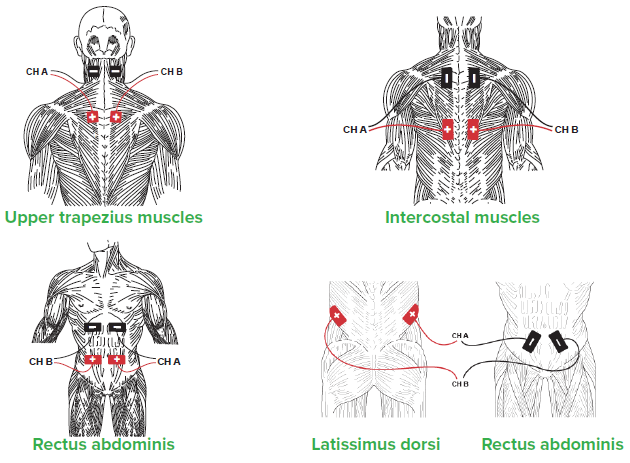Primary respiratory muscles during normal quiet breathing include the diaphragm and external intercostals. Accessory muscles of respiration assist the primary muscles when the chest is not expanding or contracting effectively to meet ventilation demands. Increased age, stress, poor posture, COPD, pneumonia, and illness are conditions that negatively impact proper oxygen and carbon dioxide exchange in the lungs.
- Inspiratory Accessory Muscles: Sternocleidomastoid, scalenes, pectoralis major and minor, serratus anterior, latissimus dorsi, upper trapezius
- Expiratory Accessory Muscles: Rectus abdominis, external and internal oblique, internal intercostals
Many of these muscles assist with posture and improving their strength will not only improve postural alignment, but may also assist with increased expansion/contraction of the chest to improve breathing. Additionally, accessory expiratory muscles can assist in forceful coughing and airway clearance.
Research supports improved postural alignment and respiratory function with use of electrical stimulation:
- Change from upright head posture to either forward head posture or torticollis (forward head with rotation) had an immediate negative impact on respiratory function. (Zafar et al., 2018)
- Application of abdominal functional electrical stimulation (FES) can achieve functional improvements in cough and respiratory capacity in people with tetraplegia. (McCaughey et al., 2019)
- Slouched sitting position had a significantly lower sniff nasal inspiratory pressure (SNIP) score compared to upright sitting position, suggesting reduced diaphragm tension and movement due to altered body position. (Albarrati et al., 2018)
Patterned electrical neuromuscular stimulation (PENS) prior to or during breathing and postural exercises applied to accessory muscles of respiration may enhance muscle recruitment to assist in improved postural alignment and increased ventilation.

References:
Albarrati, A., Zafar, H., Alghadir, A. H., & Anwer, S. (2018). Effects of Upright and Slouched Sitting Postures on the Respiratory Muscle Strength in Healthy Young Males. BioMed Research International.
https://doi.org/10.1155/2018/3058970
McCaughey, E. J., Butler, J. E., McBain, R. A., Boswell-Ruys, C. L., Hudson, A. L., Gandevia, S. C., & Lee, B. B. (2019). Abdominal Electrical Stimulation to Augment Respiratory Function in Spinal Cord Injury. Topics in Spinal
Cord Injury Rehabilitation, 25(2), 105-111. https://doi.org/10.1310/sci2502-105
Zafar, H., Albarrati, A., Alghadir, A. H., & Iqbal, Z. A. (2018). Effect of Different Head-Neck Postures on the Respiratory Function in Healthy Males. BioMed Research International. http://doi.org/10.1155/2018/4518269
